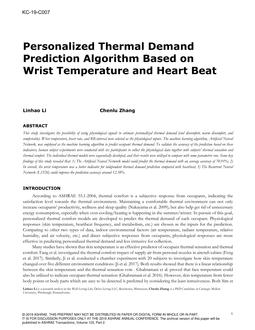Click here to purchase
This study investigates the possibility of using physiological signals to estimate personalized thermal demand (cool discomfort, warm discomfort, andcomfortable). Wrist temperature, heart rate, and RR-interval were selected as the physiological inputs. The machine learning algorithm, Artificial NeuralNetwork, was employed as the machine learning algorithm to predict occupant thermal demand. To validate the accuracy of the prediction based on theseindicators, human subject experiments were conducted with six participants to collect the physiological data together with subjects’ thermal sensation andthermal comfort. The individual thermal models were sequentially developed, and their results were utilized to compare with some parametric run. Some keyfindings of this study revealed that: 1) The Artificial Neural Network model could predict the thermal demand with an average accuracy of 70.91%; 2)In overall, the wrist temperature was a better indicator for independent thermal demand prediction compared with heartbeat; 3) The Recurrent NeuralNetwork (LSTM) could improve the prediction accuracy around 12.38%.
Citation: 2019 Annual Conference, Kansas City, MO, Conference Papers
Product Details
- Published:
- 2019
- Number of Pages:
- 8
- Units of Measure:
- Dual
- File Size:
- 1 file , 1 MB
- Product Code(s):
- D-KC-19-C007
